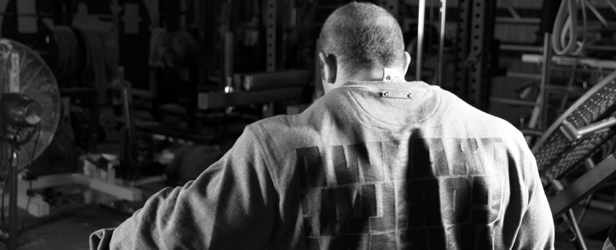
First Published November 11, 2014Editor’s Note: Being a part of the editorial staff at elitefts™ places us on the front lines of the sport of powerlifting. We witness all of the good in powerlifting, but we also see all of the bad. We see as many broke, injured lifters as we do elite totals. The impetus for this article is our need as journalists to also share these dark sides of the subculture, the lengths that the best have gone to and the admissions that sometimes the cost may, or may not, truly be worth the payoff.
We enlisted the help of Dave Tate (to find lifters with over twenty years of elite experience) and Bryan Krahn (to anonymously interview the lifters and subsequently write the article). The names have been changed to protect their identities, but the stories of these lifters are as true as any. Are these inspirational accounts or cautionary tales? Decide for yourself.
Keith won’t keep a handgun in his bedroom. Not because he’s worried his young children might find it. He’s scared that one rough morning, he might use it on himself. Keith (not his real name, all names have been changed) is a 49 year-old retired elite powerlifter. During his run he was one of the strongest human beings in the world, with a 980-pound squat, 700-pound bench, and 840-pound deadlift.
For two decades he competed in countless meets, smashing records and rarely leaving without a trophy. But there are no trophies in his bedroom. The only reminders of the astonishing strength he worked so hard to build are on the nightstand — plastic bottles of pain medications, never more than an arm's length away. Because mornings are the worst for Keith. While he sets his alarm every night before retiring, he doesn’t need it.
Pain is his wake-up call — a dull, steady ache that starts in his shoulders and biceps before shifting to his worn out hips, from which it radiates through a war zone of pinched nerves and fused discs. Vicodin keeps the pain at bay but it never lasts through the night. By 5 or 6 am its numbing effect has faded like a pleasant dream, giving way to a nightmarish reality. The first thing on Keith’s mind before he opens his eyes is taking his morning dose. It’s been that way for over ten years. He knows he’s an addict. And while he doesn’t like it, facing the day without Vicodin scares him more than any squat ever did.
The irony is, Keith hasn’t had a barbell on his back in five years. He hasn’t benched in seven years, since both shoulders finally collapsed after decades of crushing weight. He’s a retired champion powerlifter that’s no longer capable of lifting. Or even living a normal life.
He’s not alone.
The pages of Powerlifting USA were filled with living, breathing Supermen. They’re household names; at least for a while, in the small, insular world of powerlifting. Yet, like the magazine which fell into eventually demise, they retire into relative obscurity...into the real word of normal jobs, kids, daily commutes and yearly prostate exams.
How do the elite fare after the platform? Is their descent into middle age a dignified one, or do the sins of competitiveness mixed with youthful ignorance lead them down a black hole of addiction, depression, and forgotten potential? A dozen elite powerlifters, each with over twenty years on the platform, were anonymously surveyed about their injuries, drug use, and the effects on their family and quality of life. There’s a lot for the next generation of powerlifters to learn. If they listen.
The injury stats read like torture porn. Blown knees. Torn pecs. Back issues, some debilitating. Shoulder impingement, shoulder replacement, hip degeneration, and hip replacement. Numb feet and frozen hands. Torn calves. Bone spurs. Messed up elbows and biceps and triceps and wrists. Some train twenty years or more with just some back pain. Others like Keith are shuffling disasters, with both shoulders and hips gone. The guys with the most “hardcore” reputations are the hardest hit.
Keith was known as being tough as nails, the guy who could rip his pec off the bone on Friday and be back squatting on Monday. Keith loved that reputation. It gave him an edge that both fueled his drive and intimidated his competition.
Today, however, as he struggles to get out of bed, he’s not so sure.
Eddie, 45, still competes in powerlifting and bodybuilding. He’s ripped his groin off the bone, ruptured his right patella, and torn both biceps and triceps, But his biggest injury was while psyching up for a big PR. He banged his head against the barbell hard enough to give himself a contusion, nearly losing an eye in the process. “It almost exploded out of the socket. It was a bad scene,” says Eddie.
Giles, 50, came out of powerlifting relatively unscathed with just a few bulging disks and degenerative hips. His parting gift, however, was atrial fibrillation. “I was trying to make weight for a meet,” says Giles. “I hit the sauna and took some Lasix and lost 17 pounds in a night.” But doing so seriously depleted his potassium levels, so much that he easily gets thrown out of cardiac rhythm — he’s had to be rushed to the ER to be shocked back twelve times. “The last time the doctor decided not to use sedation. It hurt so bad I wished I was dead,” says Giles.
As a chiropractor and physical therapist that treats a number of elite level powerlifters, Dr. Ryan Smith sees it all first hand. “Powerlifting is an extreme sport and they’re trying to be the best in the world. You don’t know what your breaking point is until you reach it. “If you choose to compete at such a high level, you’re accepting the risks – in this case that’s pec tears, rotator cuff tears and tendinosis, shoulder impingements, biceps tears, and quad ruptures.
“Anabolic steroids use (AAS) only complicate matters,” says Smith. “That old saying that AAS users suffer more injuries because their muscle gets stronger much faster than the tendons? There’s some truth to that.” One of the guys surveyed has been married — and divorced — four times. Most others have lingered on the cusp of divorce.
Keith’s marriage has been on the brink several times. “It’s selfishness. As a powerlifter, all you really care about is yourself.” They say a man gets married hoping his gal won’t change, but she gets married hoping that you will change. “We tell our girlfriends from day one that powerlifting is our top priority. They say okay, thinking this lifting thing is just a phase,” says Keith.
“But we don’t change. And after five or ten years, it blows up.”
Giles’ marriage didn’t work though he’s reluctant to blame it on powerlifting. At least not the iron. “I got married too young,” he says. “The high testosterone levels from the steroids didn’t help my situation. “Let’s just say I got into trouble.” On the other hand, Charlie, 50, is happily married. He knew he had an amazing woman the day he met her. What he feels today is enormous guilt for everything powerlifting has put her through. Talking about his wife makes the 300-pound mountain’s voice waver. “I was so selfish. All the meets and the training. The vacations we never took. The time I spent under the bar that I could’ve spent with her.”
Eddie has a 30-year marriage, also to a very patient woman. “We planned everything around my lifting, around my meets. We never had a Friday date night because Friday was bench night. Every single Friday. “I even skipped my mother-in-law’s funeral to train.”
Eddie’s “focus” reached absurd levels. He had a fifty-thousand dollar a year job working on a 7-Up truck. But the physical nature of the job interfered with his lifting, so he quit to work in a grocery store — for seven dollars an hour. “My wife thought I was nuts,” he says. “Then I went out and dropped two grand on a Reverse Hyperextension Machine. My wife freaked out, saying we had bills piling up. “I asked her, ‘What’s more important? Paying the bills or me squatting 800 pounds?’
“I kept the Reverse Hyper.”
With marriage typically come children. Some, like Charlie, never pursued having children, but those who did all had issues conceiving, from staying “on” too long.
The good news is permanent infertility is extremely rare, says Dr. Eric Serrano, a Columbus, Ohio based physician who treats and monitors thousands of bodybuilders and powerlifters. “Out of the thousands of steroid-using athletes I’ve worked with, only three couldn’t start making sperm again. And two of them were identical twins.”
However, prolonged anabolic use, especially higher doses, can lead to other medical and psychological issues later on, especially dependency. Keith didn’t take “a lot” of anabolics by today’s standards, but that was a budgetary decision, not a moral one. “I took everything I could afford,” he says. “Typically around 2000 milligrams a week of testosterone, plus some Deca-Durabolin and Dianabol or Anadrol. “After meets I’d switch to just Equipoise until my strength started to drop, then I’d bring back 1-2 CCs a week of testosterone. “But I was always on something.”
During his competitive days, Giles settled in at a conservative 800-1200 mg of testosterone a week. “That was usually it. Nothing bonkers. “Though I once took ten Anadrol a day,” says Giles. “Yeah, that worked.”
Charlie never took high amounts of AAS, even in his prime. Always apprehensive, the big man typically stayed conservative at three CCs of testosterone a week, and then some Dianabol or Anadrol a few weeks before meets. “I’d show up at the meet thinking I was taking a lot, and then I’d talk with the other guys and realize they were taking five to ten times what I was on.” Charlie cycled off regularly, rarely staying on for more than three weeks at a time. “I just never enjoyed taking it, especially after my girlfriend (now wife) found it.
It almost cost Charlie his wife. Almost.
“I sat her down and explained to her that steroids were necessary for me to compete with the other guys.” His wife eventually accepted his decision and he stuck by his word, going off steroids as soon as he was done competing.
However, today Charlie finds himself paying the piper. He’s mired in the Andropause quicksand, bouncing through the standard erectile dysfunction meds. His next choice, ironically enough, is testosterone therapy. He won’t be alone. Most retired lifters are on the TRT train. “I keep my T levels between 1000 and 1500 mg/dl, that’s it,” says Keith. “I’m on GH too, now that I can afford it, and that has sides of its own. Not to mention it’s expensive as hell.”
According to Dr. Serrano, virtually all will require some form of TRT therapy, at least if their goal is to have a happy transition into older middle age. “Some come to see me saying they just don’t feel right. They’ll have low T. Others will have normal T levels, between 600 and 700ng/dl, yet still feel depressed. Usually these guys have really low free testosterone. “Most will have to stay on a low dose therapy, otherwise they’ll feel like shit. The trick is to monitor them closely and do things correctly,” says Serrano.
Eddie has no use for such a measured approach. A few days away from 55 and preparing for a bodybuilding contest, his AAS dosages have reached 7000mg a week. That’s not a misprint. “I count syringes, not milligrams,” says Eddie. “5000mg of testosterone esters, 1000mg of trenbolone, plus Anavar, Masteron, thyroid medication, and clenbuterol.” So why so much gear? “When I was starting out I took around a 1000mg a week, and I was told the magic really happens between 2000 and 3000mg. Then a famous powerlifter told me that those numbers were bullshit, that stuff really happens when you cross 5000mg a week. I can tell you that at 7 grams a week the gains are impressive. Things happen fast.”
As for how it might be affecting his bloodwork, Eddie has no idea. “That’s for after the show. “Right now, I don’t want to know.”
For the most part recreational drugs like alcohol, marijuana, and cocaine aren’t an issue, at least during the competitive years. Keith wouldn’t touch anything that would interfere with his training. He wouldn’t even take aspirin before a workout. “I wanted to feel what my body was doing, be connected to it.” Not so today. While Eddie and Charlie don’t require much pain medication, most cycle through Vicodin, Percocet, Toradol, and hydrocodone, along with over the counter analgesics like ibuprofen, naproxen, and acetaminophen. Then there’s sleep meds, blood pressure medication, and anti-anxiety drugs. Used individually and infrequently, none of these medications are reason for concern. Taking them in multiples and for years on end, however, is another story.
“It’s a real problem,” says Dr. Serrano. “What people don’t understand is that when you take pain pills every day for an extended period, your pain threshold literally drops. So an injury or dose of pain that wouldn’t normally affect you much is suddenly quite uncomfortable. This only fuels the addiction.” For Keith, his ten-year usage means four Vicodin a day is baseline. That’s normal. But a recent painful biceps tear had him searching for more, and Keith quickly learned that Vicodin is heavily controlled — and he was at his legal limit. “I had to work closely with my doc to come up with something else.”
While Oxycontin was an option, Keith didn’t want to go down that road. “I like being jacked and don’t want to find myself living under a bridge with a heroin needle stuck in my arm.” So Keith, like the others, will deal with the pain. But with each passing year it gets worse.
Dr. Serrano sees this all the time. “Powerlifters tend to rush the healing process. The tissue isn’t fully healed and they’re back training it heavy again. This leads to pain later in life, and problems with pain pills.” To help prevent an addiction to painkillers, Serrano focuses on soft tissue treatment while prescribing only enough medication for 60-90 days, depending on the severity of the injury. “I give them one or two pills a day, three tops if they have a physically active job.”
Serrano doesn’t avoid painkillers completely as contrary to popular belief, “safer” anti-inflammatory drugs aren’t the answer. “The problem with an anti-inflammatory is it doesn’t allow the body to heal. “Sometimes narcotics are the better choice as they allow healing to occur much faster.” At one time these men were freakishly strong. Normal humans would slow down or stop lifting entirely when they started a workout. Finding the motivation to lift heavy was never an issue. Knowing when to pull back is another story.
These are not your normal “hardcore” lifters you find on the Internet today. Those lifters might last three to five years before slow progress, injuries, or real life will get in the way and they’ll move onto the next thing. “You need to either really love this or be fucked in the head to do it for over two decades,” says Giles. “I can only think of a few who’ve lasted that long and they’re all paying a price for it.”
Today training is tough. They’re beaten and banged up, weaker, slower; mere shadows of what they once were. Many avoid the big lifts completely, so not to be constantly reminded of what they could once do, of how mortal they’ve become. For some, a simple deadlift workout means a week of excruciating pain. So their training gets scaled down dramatically. “I hit the treadmill and do hammer curls and leg presses,” says Charlie. “I’m the guy I used to laugh at.”
Although he’s affable and good-natured, Charlie’s competitive fire still smolders. “I was lifting the other day and this 19-year old kid was puffing out his chest cause he just benched 315 for three reps. “Back in my day I’d do that for 30.” Not long ago he even considered making a comeback. “I was pretty good. And I’ve always been cerebral about training. The potential was there for me to return.”
A back scan ultimately shot down Charlie’s plans, not to mention the sobering realities of time and money. “It just wasn’t worth it. It was time for the next stage in life. “Maybe with all this cardio and curls I’ll become the first 300-pound male supermodel?”
Giles also considered coming back more than once, saying he’s “got some Evander Holyfield in him.” In the end it was discovering satisfaction from coaching younger lifters that allowed him to move on. “I live a little through them, through their success, sharing what I learned.” When Keith was finally done competitively, he knew he was done. His body literally forced his hand, as several failed comebacks only led to another torn triceps and broken forearm.
Nowadays he schedules daily workouts, knowing his body will only let him hit three or four sessions a week or so. “I have the easiest time training arms, but training arms bores the shit out of me. Who the fuck has an arm day?” Eddie, however, is hanging on and going hard. The patella injury may prevent him from tying his shoes or putting on his own socks — his wife does that for him — but he can squat. And squat heavy. After his upcoming bodybuilding contest — which he’s doing “just for fun” — Eddie plans a return to powerlifting. To be the first man over fifty to squat a thousand pounds.
“I’ve hit a 955-pound squat before, so I’m close. Too close to give up now.”
Many athletes hate the weight room. For them, a new PR can’t touch the thrill of hitting a fade-away jumper or sacking the quarterback. Not to mention, there’s no team. Just you, the iron, and your own level of commitment. But the sport of powerlifting is different. Lifters train in teams and bond, becoming friends. All share in a new PR, just as all feel a torn triceps or ruptured pec.
“The guys we’re like my family,” says Charlie. “When I was considering my comeback, a big part of it was seeing everyone again. My powerlifting friends were some of the best people I’ve ever met. “But it’s different today. There are so many little federations now. As such, the records aren’t as meaningful.” This fracturing has led to an entire generation of lifters who don’t know their own sport, and what they’re a part of. Charlie says he meets kids who don’t know who JM Blakely is or Bill Kazmaier. “That’s like a quarterback not knowing Johnny Unitas. You have to know your sport and love your sport. Cause when it’s over, it’s over.”
Just ask Keith. For most of his adult life, powerlifting was his life. Until it couldn’t be anymore. “Suddenly it’s gone, and you’re a little lost. You don’t want to be around powerlifting anymore, so as a result you have no friends. A big part of your identity is gone.” Because without powerlifting, they’re no longer Supermen. Just ordinary, middle-aged guys with banged up bodies and some great memories. And a few regrets. “All just to be in Powerlifting USA,” says Eddie. “And to find out that no one cares.” Is it worth it?
Keith asks himself the same question every morning, as he lies in bed, mustering up the courage to move. Dr. Smith says powerlifters need to determine if the juice you get is worth the squeeze."You’re going to get an injury, eventually, so you have to understand the risks. An NFL player will eventually get injured too, but he’ll also have millions in the bank. In powerlifting, what’s your return? Is it worth what you have to endure the next thirty, forty, or fifty years? That’s what every lifter ultimately must decide.”
Keith made his choice. And despite the surgeries and the meds and the litany of aches and pains, he’s content with it. At least he deals with it. As you’d expect any champion to do.
Bryan Krahn, CSCS is a fitness writer, editor, and online coach. He’s written for Muscle & Fitness, Flex, Men’s Fitness, and many others. He also ghost writes for some very jacked lifters. And yes, he even lifts. You can reach him through his blog (www.bryankrahn.com) or through Twitter (@BryanKrahn).









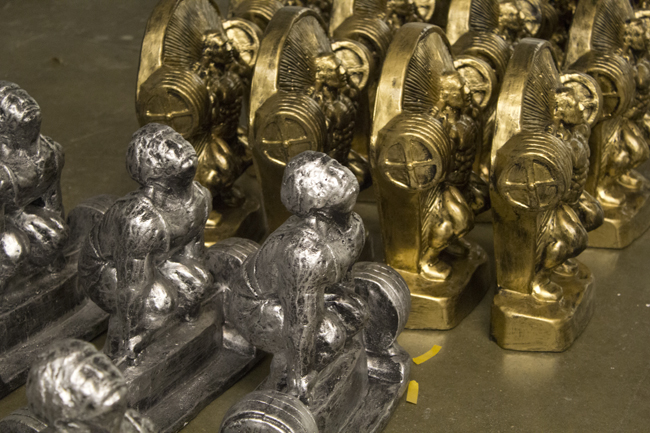
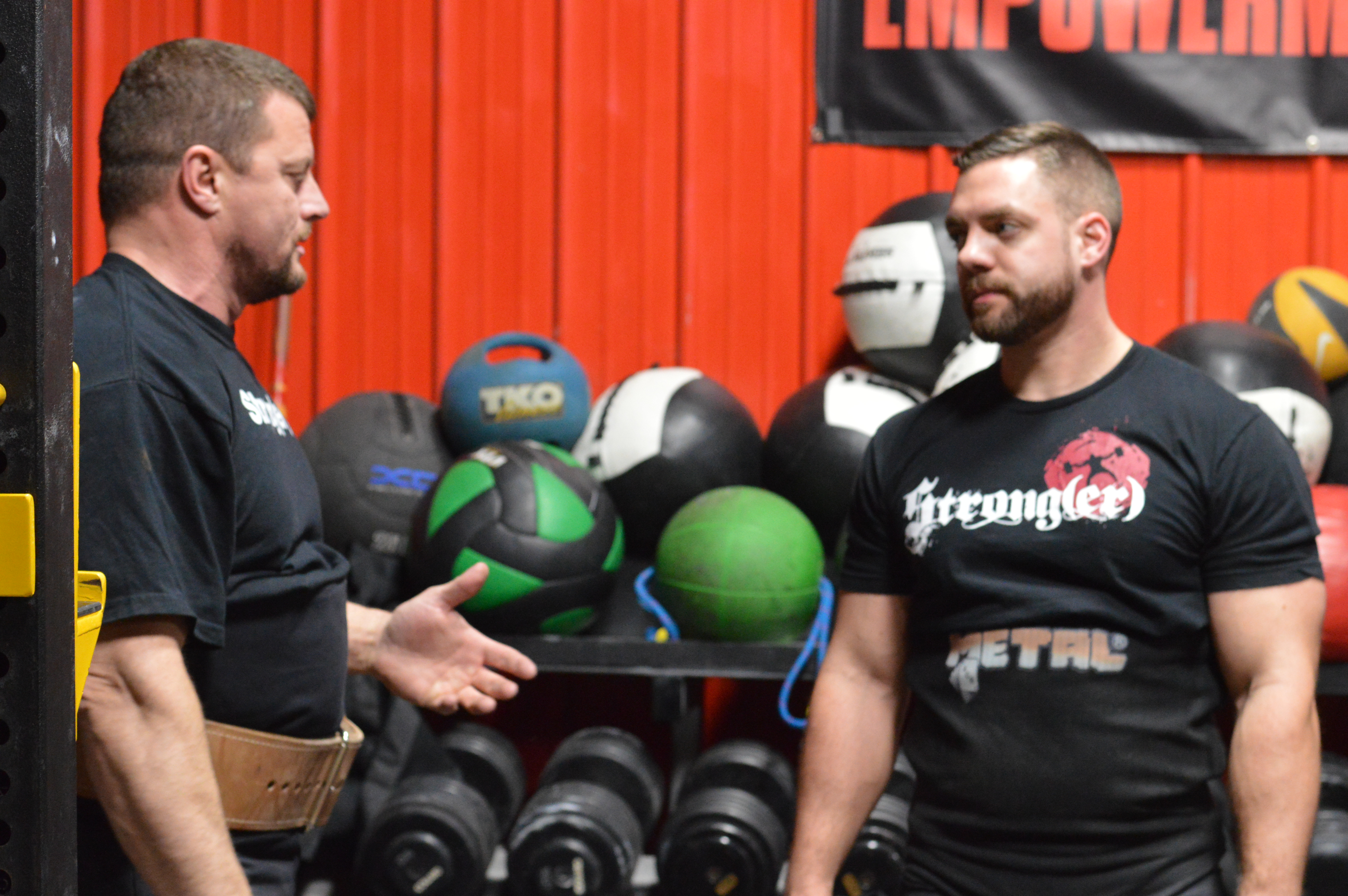
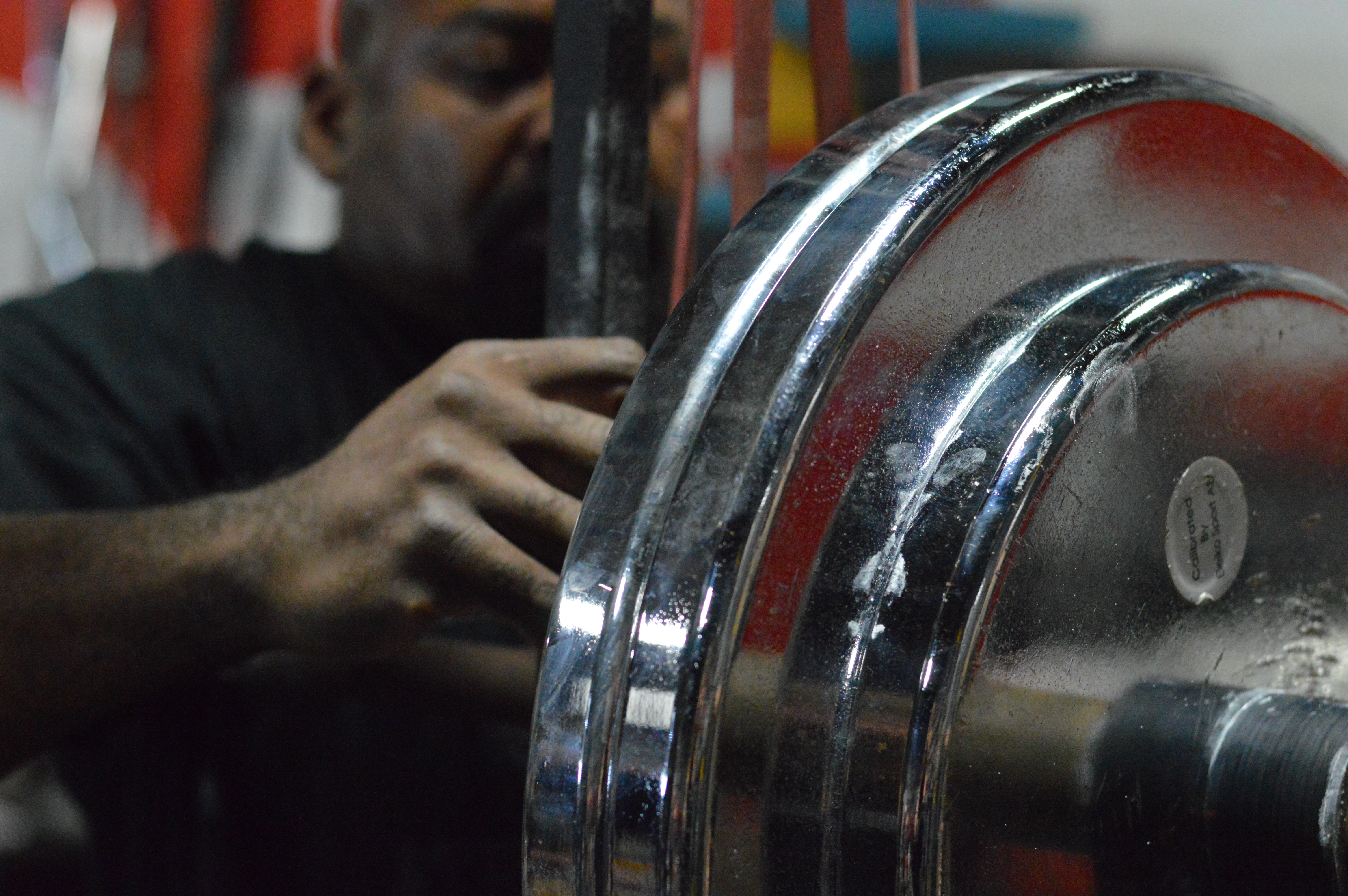
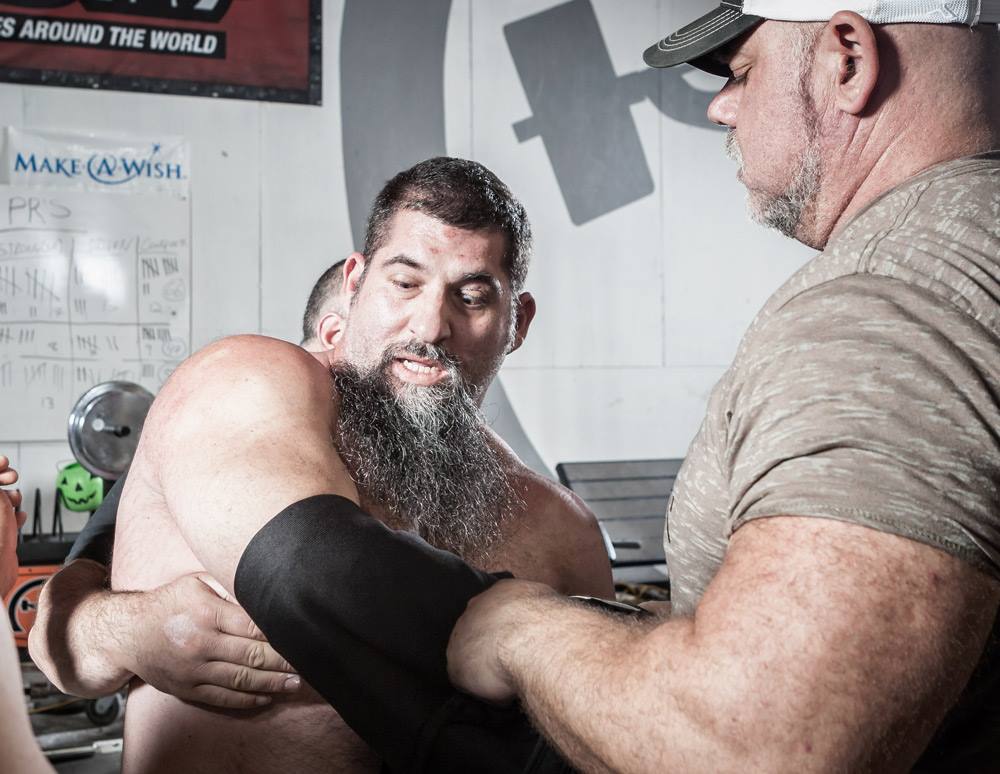

2 Comments